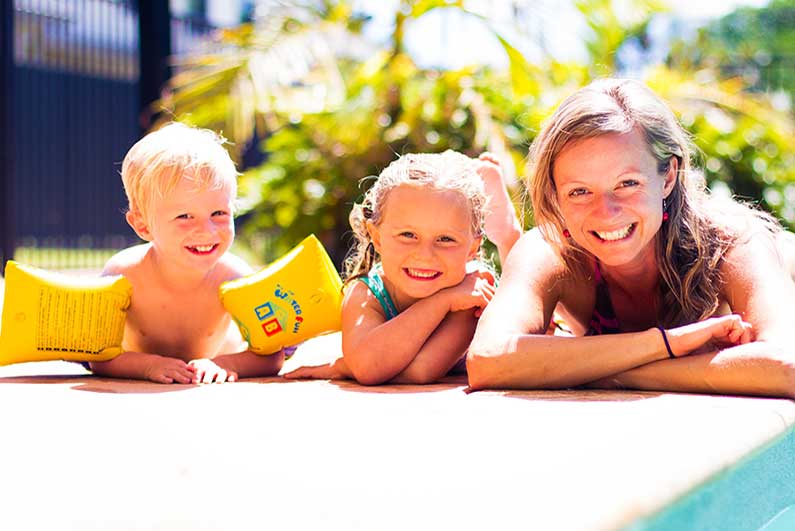Raw foodism is a lifestyle based on eating uncooked foods of mainly (more than 75%) vegetables, fruits, nuts, seeds, herbs, sprouts, pseudograins, legumes and seaweeds. Speaking about uncooked foods, what I mean is heating food at temperatures lower than 48 °C, yet ideally not higher than 42°C. The main idea is to consume foods in the most natural state, i.e. foods that are organic (without being treated with pesticides and herbicides), local and as fresh as possible.
What benefits does raw foodism bring?
What is beneficial for health, in the first place, are phytochemicals, dietary fibre, plant enzymes, wholesome chlorophyll and antioxidants. All these mentioned plant substances can help you:
- Increase your energy
- Reduce your sleep time from 8-10 to 6 hours – that also applies to some children
- Concentrate better
- Improve the quality of your skin, hair and nails
- Weight loss
- Improve your mental and physical health
How to start?
You can feel repelled with an idea that people who eat raw food only consume carrots, cucumbers, apples, bananas, gluten-free grains and pseudograins and their cuisine must therefore be very boring. Moreover, you can hardly imagine how children can eat this way.
I’d like to assure you that raw food cuisine can not only be very tasty but also very attractive as far as its visual aspect is concerned. The fantasy has no limits. If you want to try eating raw food, it doesn’t necessarily have to be 100% raw. I recommend starting slow so that your body has time to adapt gradually.
What your body can go through at the beginning is quite unpleasant detox that manifests itself in various ways and its symptoms are very individual. In our case, we suffered from headaches, decrease in activity and skin rash. This relatively strong detox can last from a few months up to a few years! Your body actually gets rid of unnecessary substances all the time and so detoxification mechanisms are a part of it. Anyway, if you let the body get rid of many years’ sediments, it’ll be grateful to you and you’ll feel great!
Start with breakfast and exchange your traditional toast with butter or cereals with milk for a delicious green smoothie full of healing chlorophyll and necessary macro and micro-nutrients. You can also offer such a smoothie to your children from the age of about 9 months.
Another perfect breakfast option is a protein rich chia seed pudding mixed with fresh almond milk, which is a great source of calcium.
Recipe:
Chia seed pudding
1/3 cup chia seeds
1 1/2 cup fresh almond milk
1 tablespoon alcohol-free vanilla extract
2-3 ripe bananas for sweetening
1 cup forest fruit for topping
Directions:
Put chia seeds into a big bowl and mix them with almond milk. Stir well with a fork until no lumps remain in the mixture. As soon as the chia seeds thicken the milk (after about 3 minutes), add mashed bananas and a bit of vanilla. Serve in a bowl and top with any berries or any other fruit you like.
Is raw foodism suitable for children?
Now you understand the basic terms of “raw food world” and how to start. Now you know you don’t have to be strict 100% raw vegans to start experiencing health benefits that this type of eating brings. But how is it with kids? From my own experience and the experience of my raw food friends with kids, after researching available literature and articles, the amount of which is still limited, and after discussing the issues with other nutritionists, I personally don’t recommend raising small children on a long-term and strict raw vegan diet. I don’t say it isn’t possible, though! We and our kids also followed 100% raw vegan lifestyle for about three months as we were treating our health problems.
Here are main but not all reasons why I prefer 55-80% raw foodism to 100% raw veganism in connection with children:
- I’m not a big fan of dietary supplements on which a huge profit is made these days. Some micronutrients are present predominantly in animal source foods and can therefore be absent in 100% raw vegan foods, namely vitamin B12 (my next article will discuss this in greater details).
- Following a raw food diet can be quite difficult in colder climate zones and also the temperate climate zone. It’s more natural and easier to do so in tropical and subtropical regions.
- In order to make sure children get optimal energy and calories intake, these have to consume a much bigger amount of raw foods, if compared with cooked foods. This represents a problem in the smallest children and later in teenagers. Also, in children and adults suffering from weakened digestion, raw foods can cause digestive issues.
- Raw food diet can be socially limiting – parents and children are subject to various pressures not only from their own family but mainly from others around. You often have to live an isolated life in order to follow 100% raw veganism, especially if you have kids. The situation is different if adults consider a raw food diet a way of solving their health problems. In that case I highly recommend following this way of eating for some time.
Why am I in favour of a raw food diet?
Simply because raw food helped our family cure allergies, asthma and eczemas. It increased our energy levels, gave us a new lease on life and improved our complexion. Last but not least, we lost excess weight. We have been eating this way almost four years now and the percentage of raw food in our diet is constantly changing according to where we live (it’s Australia now), whether we travel or not and what season of the year we are enjoying. I don’t say a raw food diet fits everyone. I’m well aware of the fact that every person is different and there is not a single health recipe for everybody, as well as there is no single recipe for perfect relationships.
Nevertheless, I can highly recommend following this way of eating for at least a week, yet best for 3 months. You will find out for yourself whether your body experiences any positive changes.


